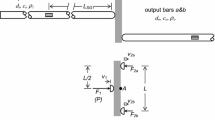Abstract
The research work described in this paper was part of a program which was conducted to determine stress distributions in a complex multicomponent pressure vessel and in several redesigned versions of the same vessel. Three-dimensional photoelasticity methods were selected for the analyses when it was determined that a number of highly stressed internal areas were inaccessible for evaluation of stresses by electrical-resistance strain gages and uncertainties regarding load transfer between mating components made an analytical determination impractical.
The results of the stress determinations in the original vessel indicated that the highest stresses were located in the small fillets at the roots of the sectored threads which were used to permit quick and convenient assembly of the parts. Results of a prototype fatigue study verified the importance of these stresses when it was determined that fracture initiated in this high-stress area.
Because of design specifications and the nature of conditions under which the vessel operates, stress reductions had to be accomplished using thread form or rootcontour changes. Since three-dimensional studies are time consuming and expensive, two-dimensional methods were selected to evaluate a number of changes before final evaluation was made in a three-dimensional model. Comparisons between results from the two- and three-dimensional studies indicated that the percent improvements indicated in the two-dimensional studies were roughly obtained in the three-dimensional vessels.
Similar content being viewed by others
Bibliography
R. V. Baud, “Fillet Profiles for Constant Stress,”Prod. Eng., 05, 133–134 (April 1934).
R. B. Heywood, “Designing by Photoelasticity,”Chapman and Hall Ltd., London, 1952.
A. J. Durelli, J. W. Dally, andW. F. Riley, “Stress and Strength Studies on Turbine Blade Attachments,”Proc. of SESA XVI (1),171–182 (1958).
A. J. Durelli, “Experimental Means of Analyzing Stresses and Strains in Rocket Propellant Grains,”,XIX (1),102–109 (1962).
C. E. Taylor, andJ. W. Schweiker, “A Three-Dimensional Photoelastic Investigation of the Stresses Near a Reinforced Opening in a Reactor Pressure Vessel,”,XVII (1),25–36 (1960).
M. M. Leven, “Photoelastic Analysis of Reinforced Openings in Cylindrical Spherical, and Toro-Spherical Shells Subjected to Internal Pressure,” Research Report 63-917-514-RI, Westinghouse Research Labs.
E. G. Coker, and L. G. N. Filon, “Treatise on Photoelasticity,” Cambridge University Press, 1931.
T. J. Dolan and E. L. Broghamer, “Photoelastic Study of Stresses in Gear Tooth Fillets,” Univ. of I'l. Eng. Exp. St. Bulletin No. 335, 1942.
R. B. Heywood, “Tensile Fillet Stresses in Loaded Projections,”Proc. Inst. Mech. Engrs., 159, 384–391, (1948).
J. N. Goodier, “The Distribution of Load on the Threads of Serews,”Jl. Appl. Mech. Trans. ASME, 62, A-11 (1940).
M. Hetényi, “A Photoelastic Study of Bolt and Nut Fastenings,”,65, A93-A100 (1943).
D. G. Sopwith, “The Distribution of Load In Screw Threads,”Proc. Inst. Mech. Engrs. 159, 373–383, 395–397, (1948).
Author information
Authors and Affiliations
Rights and permissions
About this article
Cite this article
Marino, R.L., Riley, W.F. Optimizing thread-root contours using photoelastic methods. Experimental Mechanics 4, 1–10 (1964). https://doi.org/10.1007/BF02321244
Issue Date:
DOI: https://doi.org/10.1007/BF02321244




